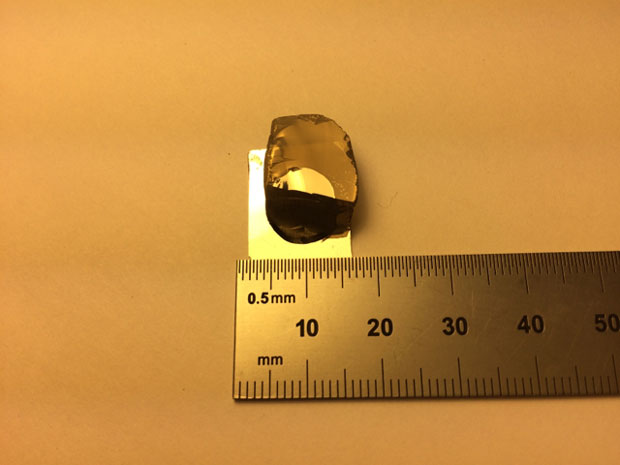Sergei Kucheyev (16-FS-005)
Project Description
The manufacture of three-dimensional objects with on-demand custom composition, geometry, and dimensions at the nanometer scale is a grand challenge of nanotechnology. The controlled fabrication and fashioning of nanometer-scale features is critically important for advances in many areas of research and technology, including nanometer-scale foams for applications in high-energy-density physics and Inertial Confinement Fusion experiments, as well as fabrication of energy storage and conversion devices, adsorbents, gas and bio-sensors, compliant electrical contacts, catalysts, actuators, and electronic devices. Such nanofoams can be viewed as materials made of nanoscale ligaments (with often complex geometries) interconnected into a three-dimensional macroscopic assembly. These are so-called unconstrained (rather than substrate-supported or embedded) nanostructures. For many of these applications, control of surface topography is required. The simplest case is polishing or smoothing. However, processing of nanofoams via mechanical and laser machining and polishing has proved to be challenging. We will explore the feasibility of ion bombardment as a powerful tool for controlled modification and analysis of nanometer-scale porous materials. Currently, there are no known methods of doping aerogels with noble gas atoms, fabrication of micrometer-thin films of aerogels, and surface smoothing of low-density aerogels. Our goal is to enable a novel ion-beam-based approach to area-selective doping, smoothing, and densification of nanometer-scale porous aerogels. We propose to perform experiments to study the evolution of foam morphology and elemental composition of these materials exposed to ion bombardment at Livermore's 4-MV ion accelerator laboratory.
We expect to determine the feasibility of ion irradiation of nanofoams with different initial monolith densities and ligament sizes under irradiation conditions with variable ion masses, energies, and doses, coupled with a detailed post-irradiation structural analysis. Specifically, we will measure effects of ion irradiation of silica and carbon aerogels with a goal of evaluating contributions from nuclear and electronic energy-loss processes to ion-beam-induced smoothing and densification. Ion bombardment will be performed with ions in the energy range of 0.5 to 20 MeV with a wide range of ion masses. This will involve irradiation under conditions with similar ion projected ranges but with a different ratio of electronic to nuclear energy losses. The effects of ion irradiation will be studied by a combination of experimental techniques, including scanning electron microscopy, high-resolution transmission electron microscopy, and high-energy ion-scattering spectrometry. Ion-beam-induced changes in aerogel density and surface morphology will be studied by atomic force microscopy and white-light interferometry in combination with sample masking before irradiation. If successful, we will demonstrate the application of ion bombardment as a tool to control compositional, structural, mechanical, and electrical properties of nanometer-scale porous materials. We hope to enable ion irradiation as a standard processing tool in the fabrication of these novel materials, and impact high-energy-density physics research, energy conversion and storage devices, and development of novel radiation-tolerant materials for nuclear energy applications for research at Lawrence Livermore.
Mission Relevance
We intend to explore the feasibility of novel material modification methods and increasing flexibility of the fabrication of nanometer-scale porous materials. The development of a new technology for tuning properties of nanometer-scale foams will enable future high-energy-density physics and Inertial Confinement Fusion experiments that are not currently possible. As such, this feasibility study supports the Laboratory's core competencies in both advanced materials and manufacturing and high-energy-density science.
FY16 Accomplishments and Results
In FY16 we (1) performed experiments to study evolution of the morphology and elemental composition of nanometer-scale porous materials exposed to ion bombardment (see figure), focusing on carbons and silica; (2) investigated the phenomena of anomalous retention of noble gases, ion-bombardment-induced foam densification, and the evolution of foam morphology under ion bombardment; and (3) determined the feasibility of ion bombardment as a tool to tune properties of nanometer-scale porous materials.







